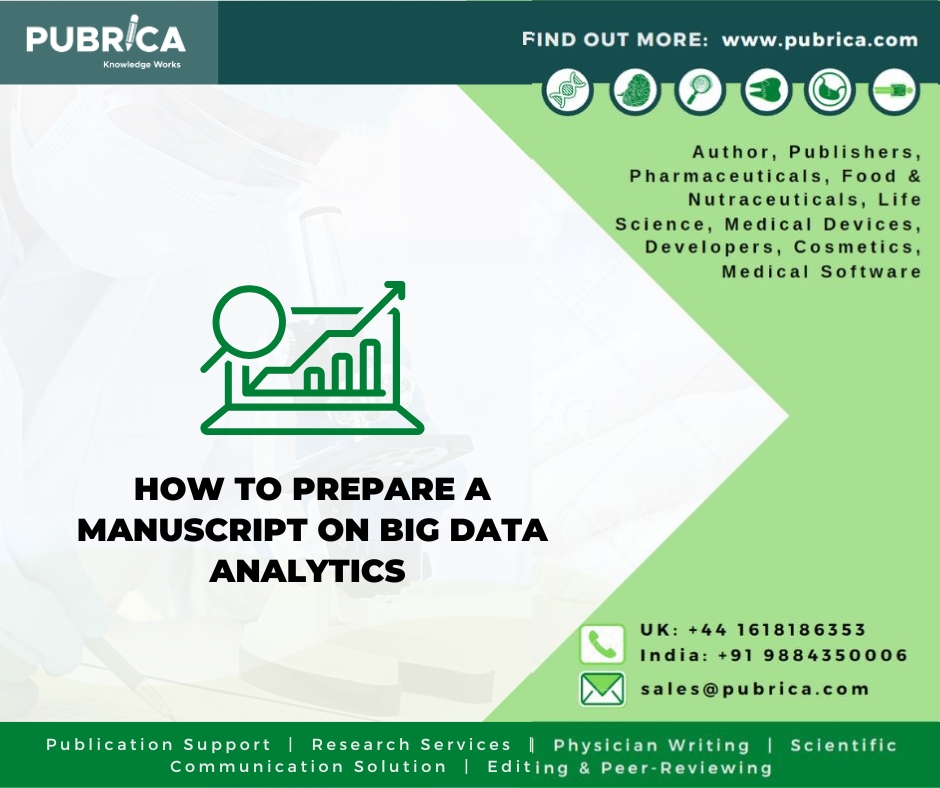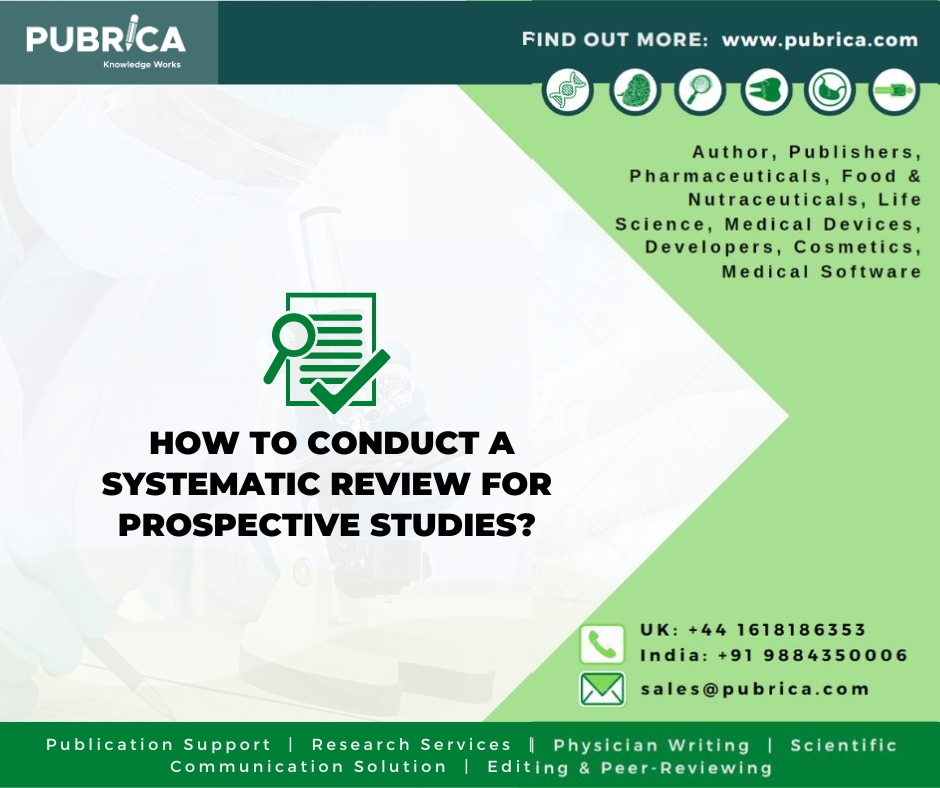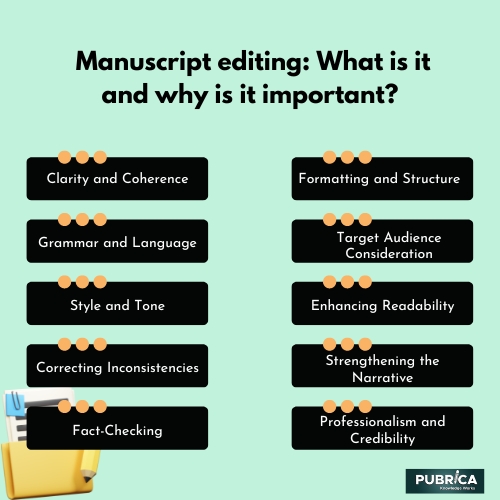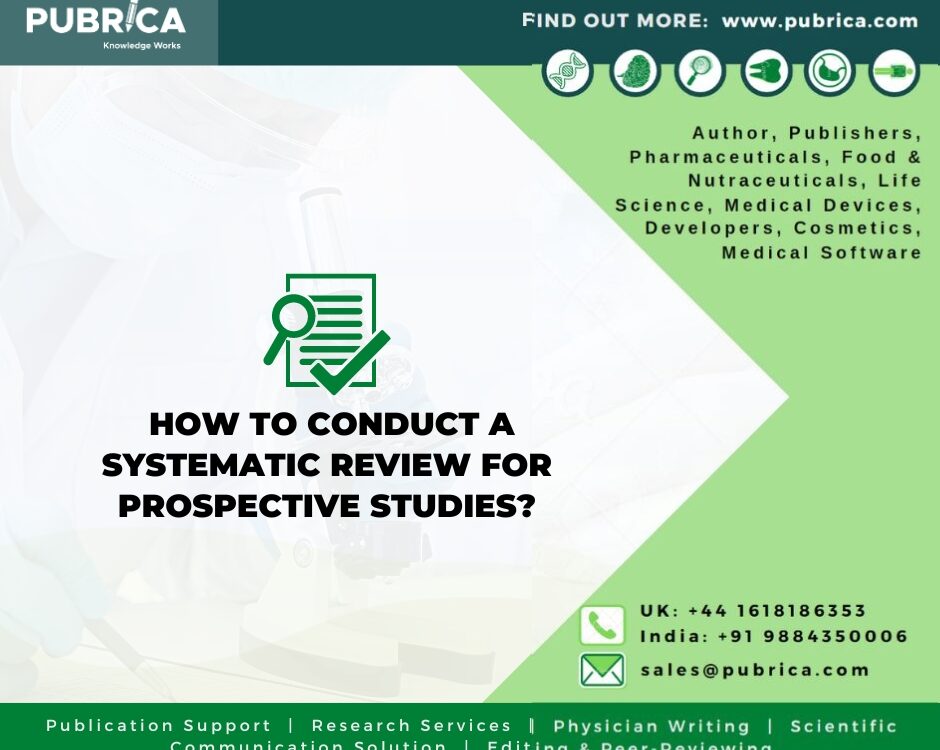
How to Prepare a Manuscript on Big Data Analytics
July 15, 2023
How to conduct a systematic review for prospective studies?
July 28, 2023Medical writing and manuscript editing preparation are often taught in undergraduate, graduate, or continuing medical education programs as editors of a “small” medical, scientific magazine published in English in a non-native English-speaking (NNES) nation. This scientific methodology and reporting specificities are required for effective scientific manuscript editing.
Introduction
What is manuscript editing?
When editing a manuscript, spelling, punctuation, grammar, phrasing, etc., mistakes are fixed, or the substance is revised. The logical flow, structure, format, and tone of the document must also be corrected to increase its general quality, coherence, and readability and increase its chances of being accepted for publication.

What phases makeup manuscript editing?
- Proofreading
Proofreading and copy editing are independent processes that guarantee that APA manuscript formats are error-free before submission. Proofreading services include identifying problems in grammar, syntax, spelling, punctuation, formatting, and other areas, whereas copy editing offers comments and criticisms on the entire content.
- Copy editing
Copy editing is the process of making sentence-level changes to a text to ensure accuracy and consistency in grammar, spelling, tone, punctuation, terminology, and syntax. It provides adherence to publication standards and style guidelines without requiring significant modifications to the mechanics of the work.
- Line editing
By evaluating sentences, improving word choice, sentence structure, style, and flow, reducing ambiguity and repetitions, and making the text error-free and entertaining, line editing eliminates mistakes and polishes writing.
- Development editing
Developmental editing is the initial step of writing and restructures a text by analyzing structure, logical flow, narrative, paragraph positioning, approach, formatting, consistency, grammar, spelling, and punctuation.
Manuscript editing is the process of reviewing, revising, and refining a written work, such as a book, research paper, article, or any other form of written content. The primary goal of Manuscript copy editing is to improve the overall quality and clarity of the text, ensuring that it effectively communicates the author’s intended message to the readers.
Importance of Manuscript Editing:
- Clarity and Coherence: Editing helps ensure that the ideas presented in the manuscript are organized logically and coherently. It clarifies ambiguous or unclear passages, making the text easier for readers to understand.
- Grammar and Language: Manuscript editing corrects grammar, syntax, and punctuation errors. It ensures that the language used is precise, consistent, and appropriate for the intended audience.
- Style and Tone: Editors can help authors refine their writing style and tone to create a consistent and engaging narrative. This ensures that the manuscript maintains a unified voice throughout.
- Correcting Inconsistencies: Editors look for and rectify any inconsistencies in the manuscript, such as contradictory statements or conflicting information.
- Fact-Checking: Depending on the type of manuscript, editors may verify the accuracy of facts, data, and references to ensure the content is reliable.
- Formatting and Structure: Editing ensures that the manuscript follows the appropriate formatting and follows any required structure or guidelines.
- Target Audience Consideration: A skilled editor considers the target audience and helps tailor the manuscript’s content to appeal to that specific group.
- Enhancing Readability: By removing unnecessary jargon, overly complex sentences, and redundant information, editors make the manuscript more readable and accessible to a wider audience.
- Strengthening the Narrative: Editors provide feedback on the overall flow and structure of the manuscript, helping authors strengthen their storytelling and argumentation.
- Professionalism and Credibility: A well-edited manuscript reflects high professionalism and attention to detail, which can significantly impact the author’s credibility and reputation.
In summary, manuscript editing is crucial because it transforms a rough draft into a polished and refined piece of work that effectively communicates the author’s ideas. It ensures that the content is error-free, coherent, and engaging, which enhances the reader’s experience and strengthens the author’s message. Whether it’s a literature work, academic paper, or any other written material, editing is an indispensable step in publishing.
To know more about Manuscript Editing Services, check our study guide. How to edit a manuscript?
Online Manuscript Editing Services for Authors in Multiple Languages
Online writing and editing services can help overcome obstacles researchers face seeking to publish their manuscripts. These professionals have business acumen, experience, and insight into the publishing industry. They provide editing services for a fee and offer additional services to writers. Multilingual authors often face challenges in publishing research in English language journals, such as technical writing, finding the best journal, and explaining datasets visually.
Pubrica has the most service offerings. The study recommends consulting editing services to improve manuscript quality before submitting them to journals.
Conclusion
Manuscript editing is crucial for refining written works and enhancing their potential. It involves a thorough review and revision process, focusing on clarity, grammar, style, coherence, and presentation. The editing process enhances clarity, maintains a cohesive voice, and upholds the credibility of authors and research. It is a collaborative process that respects the author’s vision while adding valuable insights, empowering authors to communicate their ideas more effectively and contribute to the advancement of knowledge in various fields. By investing in professional editing, authors strengthen their impact, establish authority, and create meaningful connections with their readers, making it an essential element of the literary and academic world.
- Check our Manuscript Editing Servicesample work to know and learn more about “Management of Neurogenic Shock Outside of the Hospital“.
About Pubrica
Pubrica offers outstanding manuscript editing services. Editing is often confused with proofreading, which is the correction of grammar, spelling, and other superficial errors, forming the final part of the editing process. Scientific writing editing is about revising and organizing the paper’s content to be more concise and precise. The process eliminates wordiness and contains idioms to a minimum, enabling better communication.
References
- Zakaria, Mahmoud Sherif. “Online manuscript editing services for multilingual authors: a content analysis study.” Science & Technology Libraries 41.1 (2022): 90-111.
- Mišak, Aleksandra, Matko Marušić, and Ana Marušić. “Manuscript editing as a way of teaching academic writing: Experience from a small scientific journal.” Journal of Second Language Writing 14.2 (2005): 122-131.


Guidelines for Addressing to Reviewers’ Comments
Read more